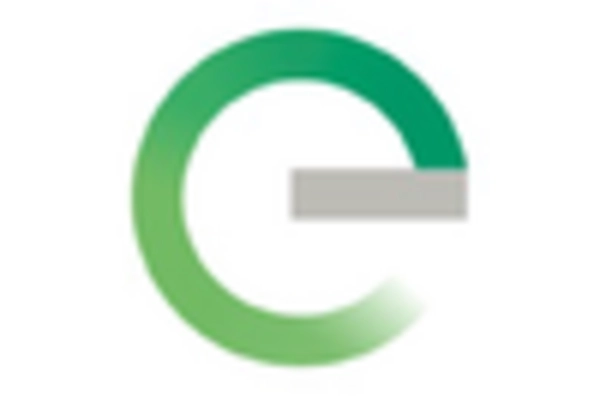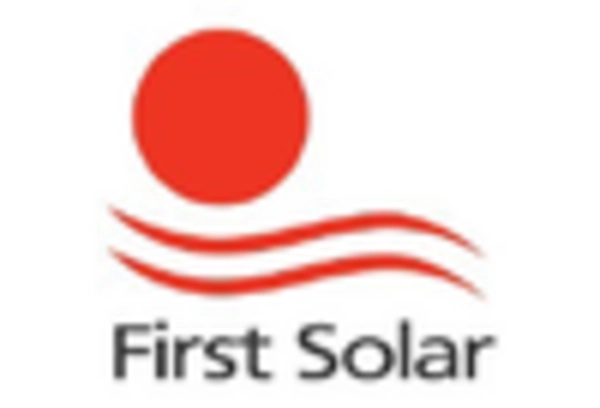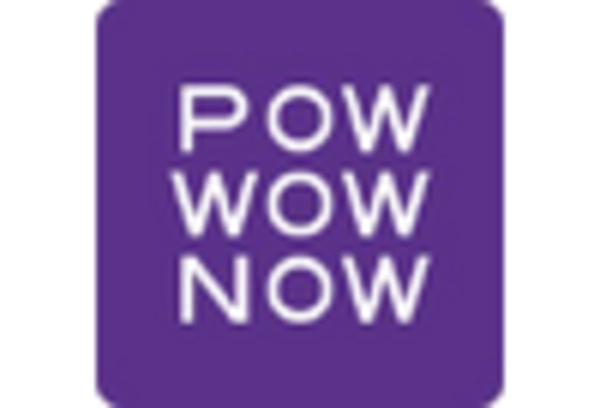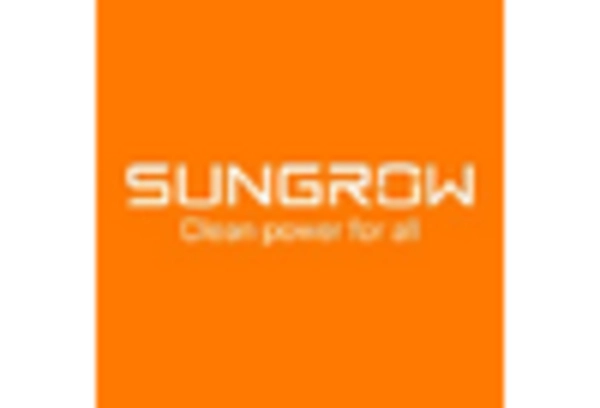Growing Environmental Concerns
The increasing awareness of environmental issues is driving the solar panel-recycling market in North America. As climate change and pollution become more pressing concerns, stakeholders are seeking sustainable solutions. The solar panel-recycling market is positioned to address these concerns by providing eco-friendly disposal methods for end-of-life solar panels. In 2025, it is estimated that around 1.5 million metric tons of solar panels will reach the end of their lifecycle in North America, highlighting the urgent need for effective recycling solutions. This growing environmental consciousness among consumers and businesses alike is likely to propel investments in recycling technologies and infrastructure, thereby enhancing the overall market landscape.
Economic Incentives and Policies
Economic factors play a crucial role in shaping the solar panel-recycling market in North America. Various state and federal policies are being implemented to encourage recycling practices. For instance, tax credits and subsidies for recycling facilities can significantly reduce operational costs, making it more attractive for businesses to invest in the solar panel-recycling market. Additionally, the potential for recovering valuable materials such as silicon, silver, and other metals from old panels can lead to substantial economic benefits. In 2025, the market is projected to grow at a CAGR of 15%, driven by these economic incentives that promote sustainable practices and resource recovery.
Rising Demand for Renewable Energy
The surge in renewable energy adoption is significantly impacting the solar panel-recycling market in North America. As more solar installations are deployed, the volume of end-of-life panels is expected to rise correspondingly. In 2025, the total installed solar capacity in North America is projected to exceed 200 GW, leading to an increase in the number of panels that will require recycling. This growing demand for renewable energy sources is likely to create a robust market for recycling services, as stakeholders seek to manage waste responsibly. The solar panel-recycling market is thus positioned to play a vital role in supporting the sustainability goals of the renewable energy sector.
Public and Private Sector Collaborations
Collaborations between public and private sectors are emerging as a key driver for the solar panel-recycling market in North America. Partnerships between government agencies, non-profits, and private companies are fostering innovation and investment in recycling infrastructure. These collaborations can lead to the development of comprehensive recycling programs that address the challenges of solar panel waste. In 2025, several states are expected to implement joint initiatives aimed at enhancing recycling rates and promoting best practices within the solar panel-recycling market. Such cooperative efforts are likely to create a more cohesive approach to managing solar waste, ultimately benefiting the environment and the economy.
Technological Innovations in Recycling Processes
Advancements in recycling technologies are transforming the solar panel-recycling market in North America. Innovative methods for extracting materials from solar panels are being developed, which enhance efficiency and reduce costs. For example, new techniques that utilize less energy and water in the recycling process are emerging, making the solar panel-recycling market more sustainable. As these technologies mature, they are expected to increase the recovery rates of valuable materials, potentially reaching up to 95% in some cases. This technological evolution not only improves the economic viability of recycling but also aligns with the growing demand for sustainable practices in the renewable energy sector.


















Leave a Comment